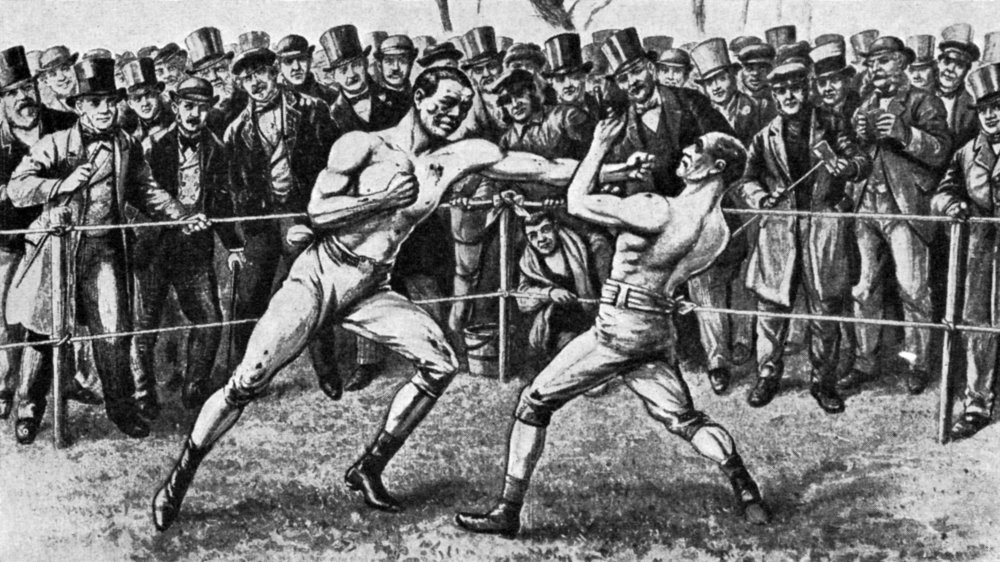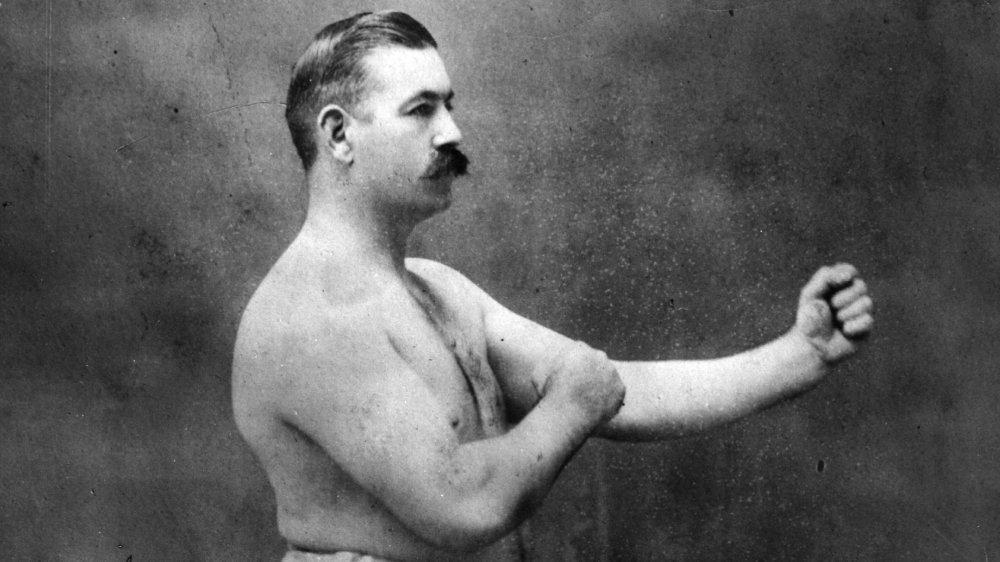The Untold Truth Of Bareknuckle Boxing
Boxing may seem vicious now, but compared to the sport's beginnings in the United States, it's actually quite tame. It was so violent at first that it was outlawed in the United States, but that didn't stop fights from drawing huge crowds. The more celebrated matches were even covered in local newspapers. But the illegal bareknuckle boxing of the 19th century was quite different from the gloved punch-offs of today. According to ThoughtCo., punches were thrown, but "the action bore scant resemblance to modern boxing matches."
There was also no such thing as a professional pugilist back then. Boxers did their fighting on the side of a normal day job. One legend of the New York boxing scene of the mid-19th century was a man who went by "Bill the Butcher" in the ring, but William Poole wasn't called the Butcher because he slaughtered opponents in the ring. He was called that because, well, he was a butcher. Still, he garnered enough notoriety in his short 33 years on this earth to become a leader of his local Know-Nothing Party, and his life was the loose basis of Martin Scorsese's 2002 film Gangs of New York.
Boxing puts the gloves on and becomes an accepted sport
Boxing began to take on a bit of legitimacy toward the end of the 19th century with the popularity of John L. Sullivan. According to boxing website Top Heavy Weights, Sullivan fought in the last world title match fought using the London Prize Ring Rules, which had no limits on time or rounds (basically, the fight stopped when one of the two couldn't stand up anymore). Neither did the London Rules stipulate the use of gloves.
The last official bareknuckle boxing match in U.S. history occurred on July 8, 1889, in Richburg, Mississippi. As many as 3,000 people watched Sullivan go round after unlimited round with Jake Klirain, who had been hailed as the Heavyweight Champion of the World in the National Police Gazette in order draw Sullivan into a fight. When Sullivan puked his guts out after round 44 (yes, that's correct: round #44!), the spectators undoubtedly thought Klirain had won. But Sullivan got his second wind, and the man who had instigated the fight finally went down in round 75.
After that, boxers put gloves on and adopted what were called the Marquess of Queensberry Rules, which standardized the sport and made it look more like what we know it to be today. But even Sullivan's epic bareknuckle finale wasn't the longest boxing match in recorded history. That title goes to the fight between Jack Burke and Andy Bowen on April 6th 1893, during which Burke broke both of his wrists on his opponent's face.

